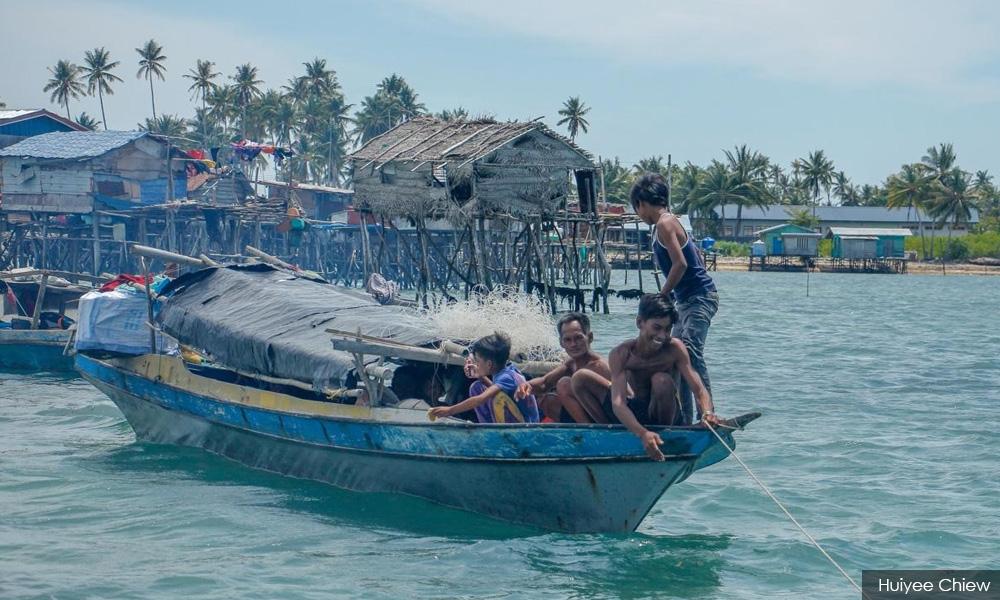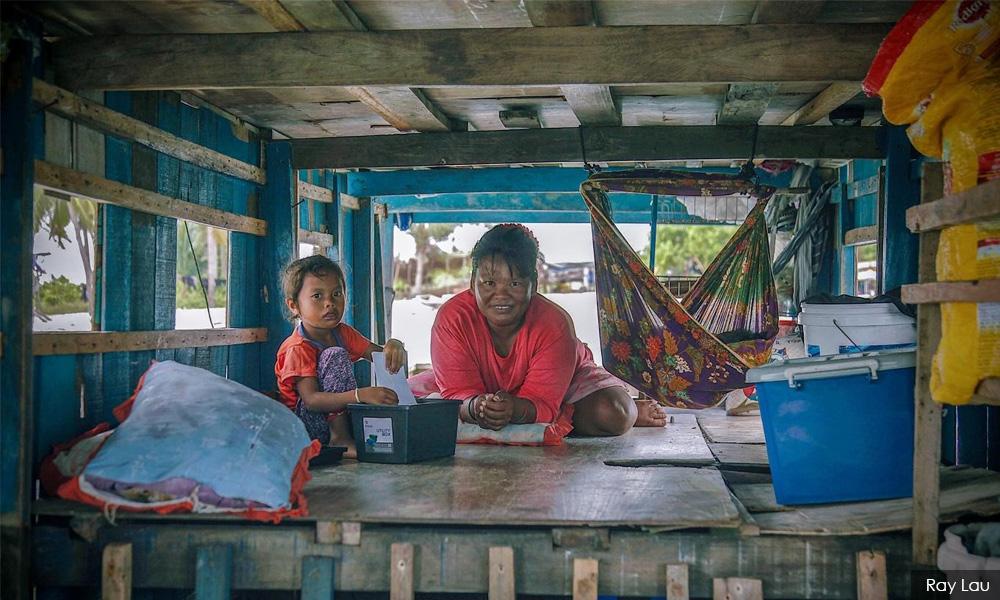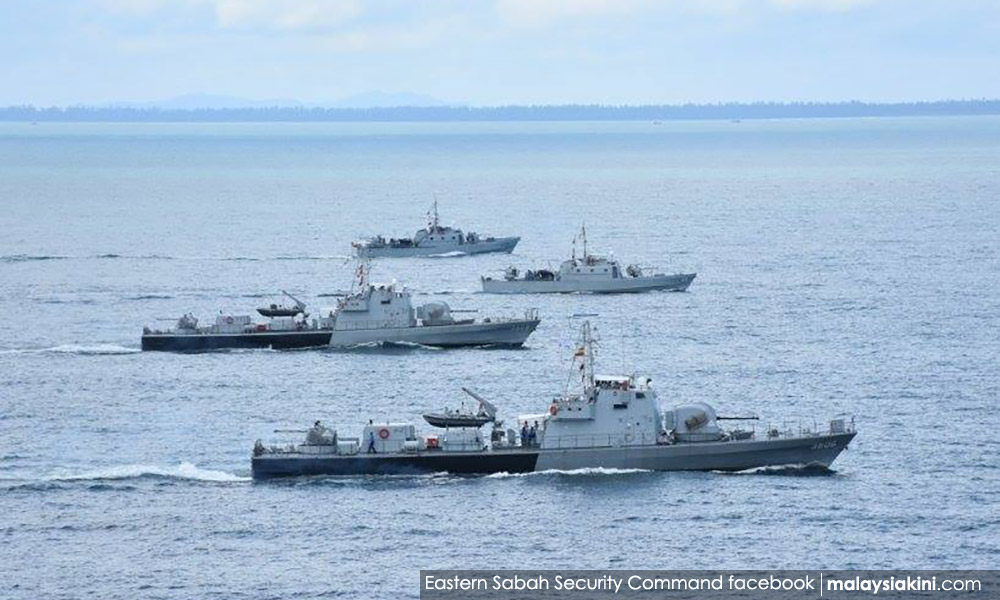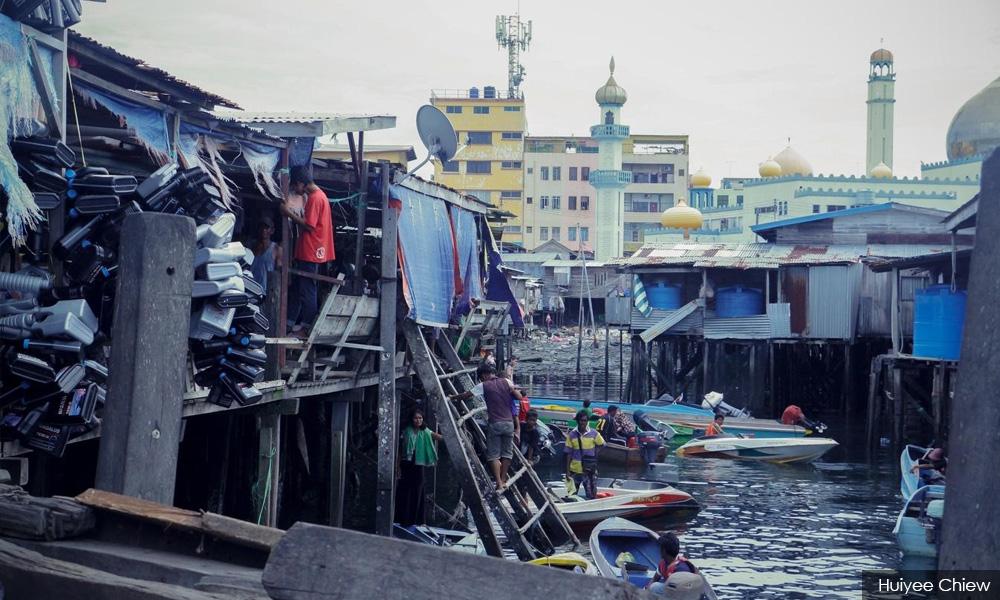FEATURE | Unggun’s family lives in a traditional Bajau Laut houseboat in Semporna, a coastal town in Sabah. He knows neither the calendar year nor his own age.
One of the reasons why he doesn’t know his age is due to his lack of identity documents. The same problem is faced by his sons, daughters-in-law and grandchildren – they are all stateless.
A stateless person is "a person who is not considered as a national by any state under the operation of its law," according to the United Nations Convention Relating to the Status of Stateless Persons. In other words, such persons are not protected by the state and do not possess basic rights that any citizen should have.
According to the UN Refugee Agency (UNHCR), there are at least 10 million stateless people around the world.
Living in a contemporary society where the state is the basic unit, statelessness affects a person’s everyday life – they can’t go to school, see the doctor, work legally, or even the right to seek help when experiencing injustice.
Since the 15th century, there have been immigrants who migrated from the Philippines to settle in Sabah, and later became citizens. In the 1970s, the Mindanao civil war caused refugees to flood into Sabah, including Bajau Laut like Unggun.
The Bajau Laut (also known as Sama Dilaut, or 'sea nomads') is one of the sub-groups of Sama-Bajau.
As early as the 15th century, the Bajau Laut seem to have been roving freely in the borderless Sulu Zone, including north-eastern Borneo and southern Philippines.
Today, they are scattered across the Philippines, Brunei, Indonesia, and Malaysia, with different sub-groups having adapted to different lifestyles.

Unggun fled to Semporna from Tawi-Tawi in the Philippines at an early age. He never met his parents again.
“My friends who came here told me that they were dead,” he says in the Bajau language, as he sits on the deck of his houseboat. Like most of the Bajau Laut who live on houseboats, he cannot speak Malay.
For those who stay in houseboats and are thus living on the sea for life, the Bajau Laut’s biggest focus is on making a living.
To Unggun, the lepa or houseboat is not just a boat, but also home – which is why he has never considered living on land.
“Staying on the houseboat enables us to move freely and it is easier to earn a livelihood. If you live in a house, you are stuck in one place,” he explains.
Before sunrise, Unggun’s four sons have jumped from the houseboat to another boat to start a new day of fishing.
Their fishing activities normally take five to six hours each day. As they are using the hook-and-line method, they usually need to stay longer to catch more fish.
Sometimes, when the weather is warm or the catch is insufficient, they will return to the houseboat for a break, getting ready for the next catch in the afternoon. When night falls, the family goes to bed.
Unggun will go to the shore, he said, to sell his catch directly to a businessperson for RM5 to RM7 per kilogramme. His daily income can reach between RM30 to RM50. It took years before he was finally able to buy an RM20,000 houseboat for his ten family members.
Unlike many other houseboat families, Unggun has better living conditions. He possesses a small fishing boat as well as a houseboat, with everything looking ample in the latter.
Inside, there are daily necessities such as gasoline, clean water, gas, and even a baby’s cradle made of cloth tied to the low roof of the houseboat.

The houseboat, however, does not have electricity. There are no televisions, mobile phones, or clocks, which a modern household may consider as necessities.
Unggun’s family doesn't seem to need all of these things. That’s why the ever-changing development of the world can be excluded at the same time.
He doesn’t view time as we typically do. His way of telling the time is to observe the rise and fall of the sun.
“How long can this gasoline be used?”
“A round trip to Semporna.”
“How many minutes does it take from here to Semporna?”
“I don’t know what is a minute.”
When Unggun is asked about regime change in Malaysia and about the new prime minister, a shy smile plays on his face.
“I have no idea,” he says.
Restricted movement at sea
Malaysia has not signed either of the two international conventions on statelessness, which are the Convention on the Reduction of Statelessness, and the Convention Relating to the Status of Stateless Persons.
The Immigration Act 1959/1963 makes no distinction between asylum seekers, refugees, irregular migrants, and undocumented or stateless people. Instead, they are all considered “illegal immigrants,” meaning that the Bajau Laut have no right to defend themselves if they encounter police raids.
Sometimes, it may take a little luck to escape the raids safely.
“It depends on the police,” a local says. Some “strict” police will arrest those fleeing the scene on the spot, but some “kind” police will let them leave. And as for other members of the police force, some “tricks” are needed.
At this point, the local rubbed his thumb against his forefinger to indicate money being given to the police.
“I saw (police) raids (carried out) in Semporna before. Not only the Bajau Laut, but other people without ICs (identity cards) were running. And they even jumped into the water to run away from the police,” Swedish anthropologist Erik Abrahamsson recalls.
Due to his deep interest in the lifestyle of the Bajau Laut, Abrahamsson has been living with them for an extended period of time in Malaysia, Indonesia and the Philippines. He can speak one of their dialects, Central Sinama.
He added that the Bajau Laut people will still find ways to return to Semporna despite being deported to the Philippines, as they consider Semporna their home where they have been living for decades.
The Bajau Laut people risk being deported initially due to the lack of identity documents when staying on land. However, by crossing national maritime borders to return to Malaysia after deportation, they risk being expelled again.
Historically, there were no national borders in the Sulu Zone until the era of colonialism. But when the maritime borders were established through the Madrid Protocol of 1885, the distribution and diversity of the local ethnic groups and communities were not taken into consideration. As a result, the movement of the Bajau Laut people, who were highly fluid, has since been restricted.
The situation has further deteriorated due to a series of kidnappings and the implementation of curfews in recent years.
Since 2000, there have been a series of kidnappings linked to the separatist movement in Mindanao in the Philippines and incidents where tourists were beheaded, spreading panic in Semporna.

In 2013, after the incursion by armed Sulu militants who claimed Sabah as part of the Philippines’ territory, the Malaysian government established the Eastern Sabah Security Command (Esscom) to tighten its maritime security and implement a curfew.
Normally, the 12-hour dusk-to-dawn curfew is imposed in the waters off six to seven districts within the Eastern Sabah Zone (Esszone). It will sometimes be extended based on the situation. Those living in the affected areas are required to remain indoors, and outsiders are not allowed to enter the waters during the curfew.
In this regard, a report prepared by Australian academics for the UN Food and Agriculture Organisation stated that the Bajau Laut who reside in the affected area have been severely restricted in their fishing activities during curfew.
Some illegal Bajau Laut migrants therefore fled to East and North Kalimantan, where the areas were less restricted. However, they were apprehended by Indonesian security forces and subsequently deported back to Sabah.
“In their (Bajau Laut) mindset, borders are the farthest distance they can reach (by boat fishing),” explains Sanen Marshall, a senior lecturer at University Malaysia Sabah who has been studying the Bajau Laut community for several years.
Thus, to the Bajau Laut, the way to restore their affected livelihoods is to find fish to catch, just as their ancestors who travelled freely within this maritime area did once upon a time.
Becoming stateless
Due to the challenging problems – tightening border controls, the gradual decline in fish, and restrictions on movement – the Bajau Laut may face an uncertain future. Moving onto land, however, is not one of Unggun’s options.
“They look down on us. They think we are dirty,” he says.
According to locals, the “uncivilised” Bajau Laut people eat, drink and excrete on the sea, and are thus perceived to be dirty. Thus, staying on land, the Bajau Laut said, makes them feel uncomfortable. They also say they will feel dizzy if they stay too long on land.
“I am afraid to walk in Semporna, I don’t have surat lepa-lepa,” Unggun says, referring to a 'boat letter'. According to a 2015 study by Universiti Kebangsaan Malaysia’s Ethnic Studies Institute, the letter is issued by a village chief to verify a person’s identity as a Bajau Laut.
A 2016 master’s thesis by researcher Chuah Ee Chia, titled “Nomadic marginalities: The case of Bajau Laut’s status within states and local economies in Semporna, Malaysia,” further states that this letter confines the Bajau Laut to the area of Semporna without any access to public goods.
Unggun’s other family members do not have this document either. In fact, some Bajau Laut people are even clueless about surat lepa-lepa.

In July 2018, a Sabah NGO coalition named Gabungan NGO Negeri Sabah (Gannos) said that it had conducted a month-long survey which showed that there were an estimated 60,000 stateless people in Sabah. Malaysia has no official data on the Bajau Laut population. Thus, it is also unable to know who has the necessary identity documentation.
Whether the Bajau Laut people can obtain identity documents is influenced by political realities.
In the 1970s, when Philippine refugees flocked to Sabah, different organisations and agencies were involved.
Various organisations and agencies were involved in dealing with the influx of Philippine refugees to Sabah in the 1970s. According to the Royal Commission of Inquiry on Sabah immigrants, the UNHCR, with the assistance of the Sabah government, managed settlement schemes for the refugees by providing basic infrastructure and livelihood opportunities.
The federal government also granted IMM13 passes to the refugees, while the Sabah state government granted them settlement certificates. This means that, at that time, different types of identity documents with different durations of residence existed in even the same household.
'Project IC'
Political interventions further complicated the problem.
Sabah and Sarawak agreed to merge with Malaya in 1963 in order to form Malaysia. Between 1980 and the 1990s, Dr Mahathir Mohamad, the then-prime minister, was accused of implementing “Project IC.”
This project, it is claimed, “systematically” granted citizenship to tens of thousands of illegal immigrants from the Philippines and Indonesia for political purposes.
The alleged goal was to increase the number of local Muslim voters by turning southern Filipinos into voters. This has changed the population demographics of Sabah, where non-Muslims were previously the majority.
According to Ruslan Alias, an assistant head of the National Registration Department’s identity card division for Sabah and Sarawak, 127,949 identity cards issued in the state from 1979 to 1996 were believed to be questionable, of which up to 91,656 were deemed “unsystematic.”
As a result, some people have become citizens under these circumstances, while others become illegal immigrants, undocumented or even stateless.
A master’s thesis by Helen Brunt mentions that the Bajau Laut had been issued the IMM13 special refugee passes with the help of UNHCR. In an examination of Malaysian refugee policy, Amarjit Kaur states that the IMM13 passes allowed Filipino refugees to gain lawful employment and access to education and health care.
However, when the political situation in the Philippines changed in 1986, the Malaysian government halted the process. The refugee status of IMM13 holders was also revoked in 2001.
In order to remain in Sabah, one had to secure a work permit. This is why many Bajau Laut, especially their wives and children, have fallen into illegal and undocumented status, and eventually find themselves stateless.
Unggun, like other stateless Bajau Laut people, prefers staying at sea as the risks that come with moving onto land may be greater.
Besides fishing, the illiterate Unggun would likely have to work more to earn a meagre salary. Due to their stateless status, very few locals are willing to hire an “illegal immigrant”. The only reason locals hire them, according to anthropologist Abrahamsson, is that they can be paid less than others.
“If it is difficult to make a living (someday), I will move to other places,” he says, with his hand pointing to the other side of the sea. He adds that he will continue to travel if it is difficult to make a living there as well.
The Mandarin version of this article first appeared in The Initium.
NEXT
The Bajau Laut families left adrift and stateless
RELATED REPORTS
'An invisible jail' - stateless children in Malaysia
Aina’s story: Why M'sia needs to rethink how it treats institutionalised children

